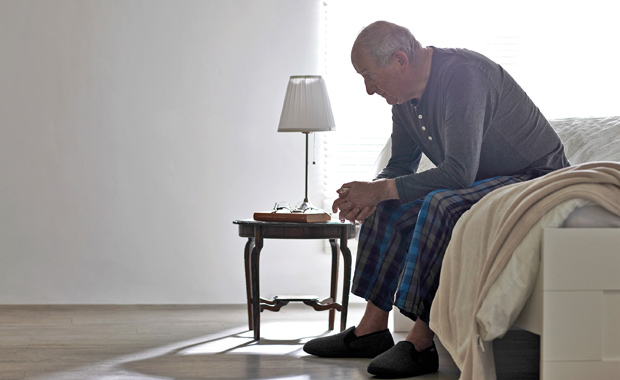What You Can Do To Avoid Shingles
Prevention and Treatment Learn about the importance of shingles prevention from a patient who lived through the experience.

aureen Fleming wasn’t one to skip out on work, but nearly 20 years ago she woke up and realized that going to her volunteer position at a Waterloo women’s treatment centre that day was not a possibility. Fleming, who was 43 at the time, recalls that the program coordinator was upset, saying all Fleming had to do was come in and sit.
“That’s all well and good,” Fleming had responded, “but I can’t get any clothes on.”
Fleming was suffering from shingles, a disease caused by the varicella zoster virus, which is also responsible for chickenpox. After the classic red, itchy blisters of chickenpox clear up, the virus lays dormant in patients and can be reactivated later in life as shingles, also known as herpes zoster, causing a painful rash and possible nerve damage.
“Everybody is at risk for shingles, to some degree,” says Dr. Peter Watson, a neurologist at the University of Toronto and author of Herpes Zoster: Postherpetic Neuralgia and Other Complications. “It occurs at all ages, but the risk starts to climb at age 50 and then it’s just a straight increase in incidence with every further decade.” According to Health Canada, nearly 3 out of every 10 Canadians will get shingles in their lifetime, and two thirds of those cases will occur in patients 50 and over.
What a pain
For Fleming, it first started with a small rash around her belly button. “It felt like hives, itchy and painful, but it didn’t look like hives,” she recalls. Simply wearing pants or fitted shirts, and having the material rub against her stomach, was too painful for Fleming. It was more than a week before she could comfortably wear regular clothes again. Dr. Watson explains the reason shingles cause such searing pain is because the virus attacks the nervous system. He adds that complications from the disease can cause persistent pain, vision loss or possibly loss of an eye, facial paralysis, and even an increase in the risk of stroke or heart attack.
The rash on Fleming’s stomach eventually cleared, but she says the nerve pain — one of the most common side-effects of shingles — returned. “It feels like your skin is kind of tight, and that it’s going to crack,” she says.
The lifetime risk of this persistent pain, known as post-herpetic neuralgia, is 30 percent amongst shingles patients. And, because it is related to age, Dr. Watson explains the risk can be as high as 50 percent for those 60 or older who get shingles — and it can be very debilitating. “It really turns a patient’s life upside down,” he says.
Avoiding shingles
While there is no cure for shingles, there is now a vaccine that can help patients avoid Fleming’s experience.
The shingles vaccine is approved for Canadians over the age of 50 and cuts the likelihood of developing shingles in half. The injection, which is considered safe with minimal side effects by Health Canada, also significantly reduces the risk of complications such as post-herpetic neuralgia.
Recognizing the importance of the shingles vaccine, the Ontario government is now providing free vaccinations to people between the ages of 65–70.
Dr. Watson says the vaccine is a much-needed tool to help combat shingles. “Having seen many patients deal with this disease first hand, when the vaccine came along, I thought, ‘thank God, we’re going to be able to prevent this.’”
Fleming’s message to Canadians is simple: “If you have had chickenpox, get the shot.”















.jpg)




























.jpg)






















.jpg)

.png)












